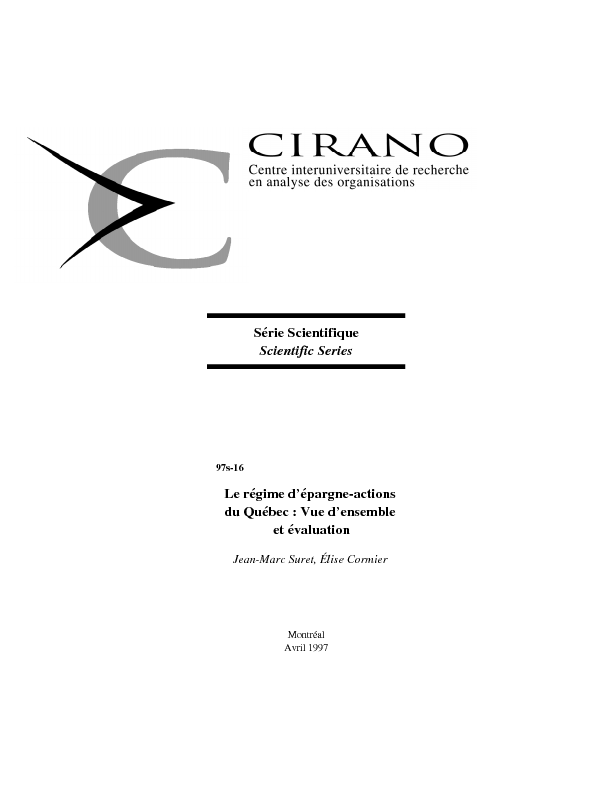Le régime d'épargne-actions du Québec : Vue d'ensemble et évaluation
This in-depth analysis of the Québec Stock Savings Plan (QSSP) proposes to evaluate the Plan dealing with its different sections and offering interpretation of its onjectives. The Plan had the short-term effect of generating a stream of primary issues from small companies. A large proportion of the small companies that floated primary public issues under the Plan have now disappeared as a result of bankruptcy or sale.Investors who put money into this section of the Plan have suffered keen disappointment and their opportunity losses total hundreds of millions of dollars. The impact on the capitalization of small companies was short-lived. On average, these companies' debt levels returned to pre-issue levels within one or two years. A number of companies showed higher debt levels due to relatively mediocre performance. On average, issuers recorded significantly weaker earnings after the issue than before. The analysis indicates that listing securities on the Stock Exchange via tax incentives has been o very ineffective stimulant in the case of small companies. Moreover, the Plan has probably had a perverse effect, driving many disappointed investors out of this market forever. Medium-sized companies have made extensive use of the QSSP. Some of them have floated a number of issues under the Plan. Some of these companies have experiences significant growth. It is, however, difficult to link this growth with to the Plan for a number of reasons: 1) many of the companies in question received large subsidies at the same time; 2) most of these companies had sufficient cash flow to finance their growth; 3) many of the companies paid out dividend equal to a substantial proportion of the funds they raised under the Plan during the period under study. It is possible that the QSSP has spurred the growth of some companies. However, it is difficult to demonstrate that the Plan was an essential factor in their growth, which a number of indicators suggest could have been achieved without the tax expenditure. Initially, the QSSP allowed investors to buy large company shares without restriction. The deduction for this type of investment was subsequently reduced and the authorized amount lowered. The amounts issued and the credits granted for these companies' issues have been considerable, but the effect on the capitalization of these companies, which generally have egnerous dividend policies, has been negligible.
[ - ]




